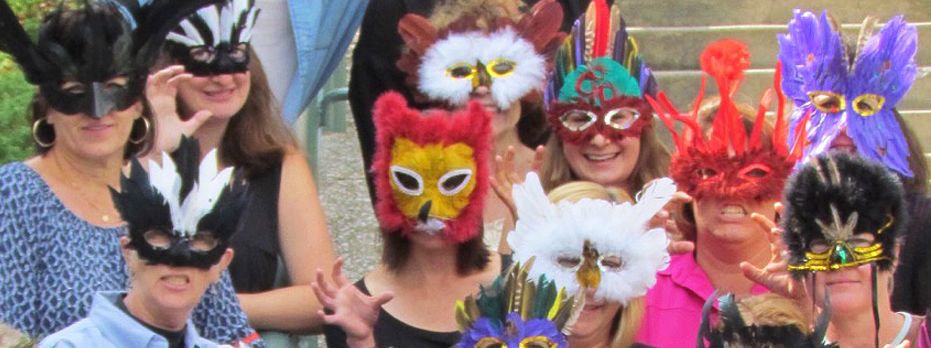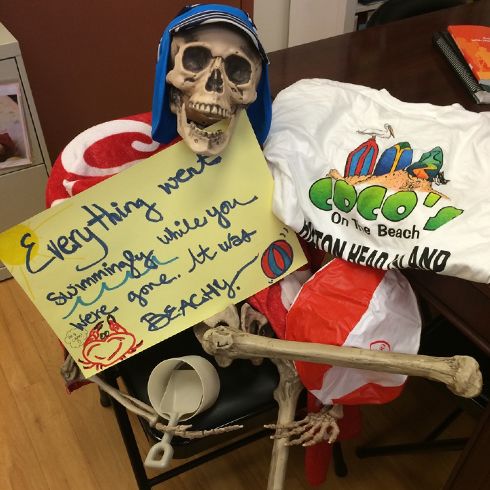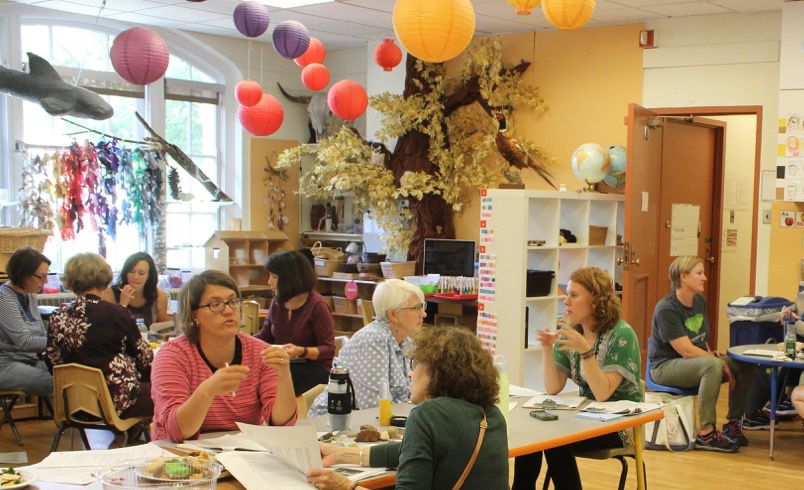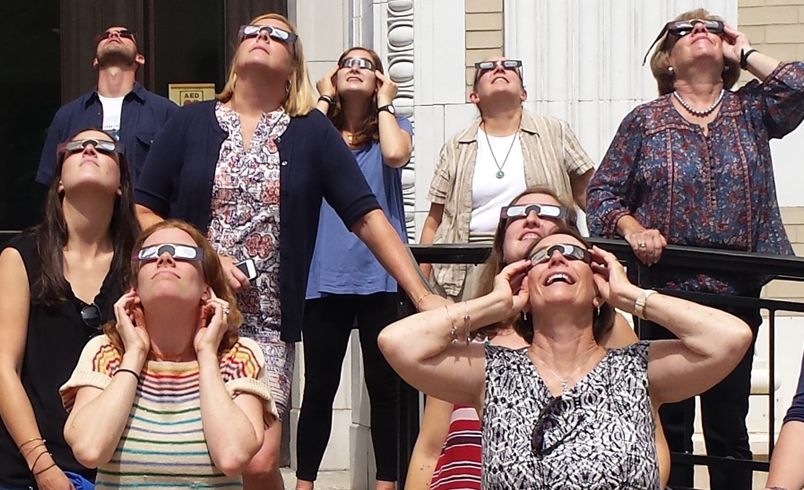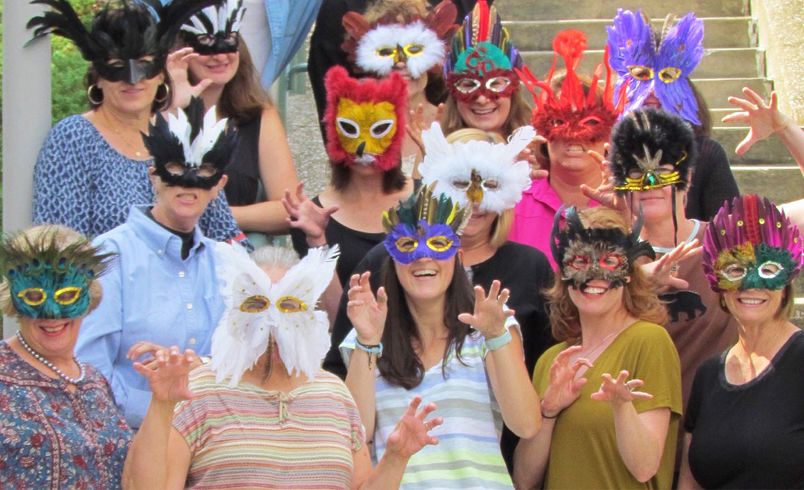Cultivating a Culture of Creativity
| August 2018As the new school year approaches, how do you feel? Excited? Anxious? Confident? Uncertain? Are you relaxed and energized to creatively plan for the new year or are you already experiencing pressure and stress? How can we cultivate a culture in which everyone can thrive rather than merely striving to survive?
Let’s take inspiration from the children themselves. Let’s aim to cultivate openness, wonder, joy in learning, and the spark of imagination. As Jason Kotecki recommends, “One of the keys is to not be childish, but act childlike. The idea is not to shirk adult responsibilities. It’s about finding ways you can interject fun into your everyday life.”
How can educators collaborate to support a positive start to the new year, as well as maintain a creative and constructive atmosphere throughout the school year? At the Carnegie Mellon University Children’s School, educators strive to spark initiative and ingenuity in creative ways to increase energy and motivation for engaging in the learning process.
Spirit of Spontaneity & Surprise
Creating a culture of creativity begins with individuals having a spirit of spontaneity and surprise that delights others and creates laughter. A frantic search, one day, for a missing spatula at the Children’s School started a game of humorous spatula hide & seek that lasted for weeks. Our school’s adult-sized skeleton model is, of course, occasionally used for classroom lessons, but it more often surfaces in unique poses to welcome someone back from vacation or announce some encouraging news. Imaginatively placed rubber ducks, celebrity photos, or marshmallow peeps have brightened many moments on otherwise stressful days.
Naturally, an atmosphere where such inventiveness and fun occurs requires modeling by leaders who flexibly and intentionally give permission for lighthearted fun. Leaders also must show an appreciation for diverse ideas and efforts, with the inevitable trial and error. Highlighting a wide range of approaches to generating ideas helps everyone acknowledge multiple strategies, such as reading books, surfing the web, visiting museums, or shopping at garage sales. Supporting everyone’s increasing comfort with freely expressing themselves and exploring new ideas and approaches will engender the confidence and creativity necessary for the whole learning community to thrive.
It’s easy to think of low-cost ways to celebrate life and learning with minimal preparation. For example, on National Chocolate Day, take a survey of chocolate preferences, share recipes, and surprise everyone with chocolate chip cookies. National Lucky Penny day fell on a professional development day, so our director hid over 300 pennies around the school the night before and left a note challenging people to find them when they came to school. There were simple prizes for the most found, the oldest, and the nearest date to one’s birth year.
Using the celebration calendar (https://www.daysoftheyear.com/) even prompted creativity for a professional development seminar on the similarities and differences between inquiry learning, loose parts explorations, and make shop experiences. The workshop was scheduled on National Paper Clip Day, so we challenged educators to do inquiry learning to make paper clips float and become magnetic, then to incorporate paper clips with other loose parts to imaginatively arrange materials for play, and finally to use design thinking to construct the tallest structure with only paper clips and three pieces of card stock.
There are enough celebrations for everyone on the team to find something interesting to lead, and you might even consider inviting the children to plan their own celebrations. On National Thrift Shop Day, give everyone a few dollars to find the best classroom enhancement they can or ask parents to scour thrift shops for good dramatic play attire. To celebrate National Bow Tie Day, teach everyone how to tie a bow tie, wear them for the day, and have bow tie pasta for lunch. What ideas do you have for celebrating World Gratitude Day, Dictionary Day, National Pickle Day or Monkey Day?
Resource Considerations
To cultivate a culture of creativity, the center’s leaders need to purposefully allocate sufficient resources of space, time, energy, and exposure to diverse people and ideas. Intentionally disrupting adults’ habits and routines can also be very effective in creatively infusing joy into the learning community.
Space:
For example, choose your staff development location considering the importance of balancing routine with novel venues—inside or out, on campus or in the community. Because we have no room with adult furniture big enough for our whole staff, Children’s School staff meetings are often held in one of our larger classrooms, either sitting in children’s chairs or with folding adult tables and chairs. Meetings in the center have the advantage of ease and familiarity, but that sometimes promotes conventional thinking, so we occasionally reserve a university lounge or meeting room, or we gather in our outdoor classroom or a nearby garden. We have also tried “walking staff meetings” wherein we raise an issue or some reflection questions and then invite everyone to take a walk around campus or in the adjacent park so they can dialogue casually with different people.
On professional development days with more time flexibility, we schedule meetings in inspiring venues, such as a local art museum, zoo, or restaurant. For example, when planning for a whole school unit on Building, we had one walking meeting to identify interesting places on campus to highlight various building features, and then we took a field trip to Frank Lloyd Wright’s Fallingwater for a tour about his architectural style and a discussion on how to help 3-5 year olds understand his key concepts.
Time:
Planning opportunities for individuals and small groups to reflect prior to more formal sessions, time for both casual and structured dialogue, and time to simply explore new ideas or materials without a specific goal or task promotes more collaboration and creativity. Using a “think—pair—share” approach invites everyone to engage by first thinking about the topic individually, either briefly during the meeting or when given the topic in advance of the meeting. Asking pairs or small groups to dialogue before the whole group discussion and then share their ideas ensures wide representation. Allocating time for casual interactions between educators affords opportunities for connections based on shared interests, challenges, etc. that may trigger fresh ideas. At the Children’s School, educators share lunch in different spaces within the school or outside, small groups tackle mundane tasks like organizing shared spaces and materials, and teams meet both informally with each other and formally with administrators, depending on the issues at hand. We also purposely allocate time for interesting learning opportunities that arise, like watching a recent eclipse together.
Energy:
Both space and time impact the amount of creative energy of individuals and groups. At the beginning of the day and early in the week, most educators have more mental energy for being creative. At the same time, long TO DO lists can cloud thinking. We often give educators the first few hours of a professional development day to work through their lists so that they can then relax to reflect on bigger picture ideas. Feeling physically comfortable in the space and socially connected with colleagues is also energizing, so we often meet while sharing snacks or meals, and we frequently include some type of low pressure “get to know you”, team-building activities. For example, when incorporating a new educator recently, we started with a round of partner sharing with simple, non-threatening questions, like What makes you laugh? What is the best compliment you have received? What is your favorite family recipe?
Here again, people are energized for thinking creatively by varying the brainstorming techniques. Try a “Carousel Brainstorm” by posting chart paper with different questions or topics around the room and then having individuals or pairs each spend 2-3 minutes adding their ideas for each one. The first few are pretty easy; but as people rotate, they need to think more divergently to generate ideas that are not already listed. Sometimes, we add a competitive element by asking, how many different ways can you think of using / doing / solving, etc.
For example, in preparation for a unit on Textiles, we tried a photo brainstorming activity with the prompt, “How many ways can you use a bandana?”, to help everything think about the diverse uses for textiles in our lives. Then we could count the total number of ideas, but also eliminate the common ideas to identify the most unique. Another approach is like a scavenger hunt wherein educators seek to discover opportunities, such as new field trip sites on campus, varied materials to use for dramatic play props, indoor activities that could enhance outdoor play, natural materials that could be brought indoors for deeper investigation, etc.
Diversity:
Engaging educators with diverse partners can also broaden their conceptual connections and possibilities for creative thought. Varying the partner pairing and small group composition allows individuals to work with others who have different roles, teach different age levels, serve on different teams, etc. Collaborating with educators from different centers helps expose assumptions based on local context that might constrain thinking. For example, in Pittsburgh, educators at all the university-based schools formed an alliance so that our educators could visit each other’s classrooms, join book clubs, participate in workshops, etc. to broaden their perspectives.
When planning for thematic units, we also invite local experts to engage with us in thinking about how to best involve young children with the thematic content authentically. For example, we partnered with local children’s theatre groups when preparing for a study of Theatre Arts, with the Aviary when planning a study of Birds, and with the Pittsburgh History and Landmark Foundation when studying Building. We’ve also found that children’s adult family members are eager to share their expertise to enrich our thematic explorations, such as a grandparent teaching children and educators to use her weaving loom during our Textile unit, or parents involved in theatre production teaching about lighting or costume design during our Theatre unit.
What a joy it is to collaborate with early childhood educators in a culture of creativity! Having everyone’s energy productively focused on initiative and ingenuity opens each learner to benefit from the full set of possibilities available and promotes deep engagement in the learning process. Best wishes for an inspiring year as an educator!
Photos: courtesy of the authors
References:
Based on Rosenblum, M.L. and Carver, S.M. (2018). Beyond Brainstorming: Promoting Educator Creativity. Annual Conference of the National Coalition of Campus Children’s Centers, Albuquerque, NM.
Participant Input from “Beyond Brainstorming: Promoting Educator Creativity”
Ideas for promoting a Culture of Creativity
Celebrations
- Fun Fridays: mismatched sock day, make a friend day, gift wrap yourself day (Jill Howard)
- Birthday Calendar: each person ensures that one other person gets a card & a cupcake (Myra Sprague)
- Acknowledging the Little Things: making an effort for mini-celebrations and funny moments center wide (Kimberly DeLeon)
- Relaxation Treats for Adults: coloring books, coffee, ice cream, stress relievers, massage, potlucks (Lacey Hoppe, Terra Cappel, Teresa DeLisi)
Play
- Invite adults to play with the toys & materials themselves (Ross Thompson)
- Group Art Project: guided and off site (Anonymous)
- Yoga or Zumba Class: re-energize staff (Lacey Hoppe)
- Mindfulness Walk: using new eyes & walk outside (Michelle Rosen)
- Conversation Pit: an outside area for socializing (Barbara Benn)
Brainstorming
- Open Door Policy: come into my office and share your ideas (Katheryn Blair)
- Weekly Doodle Project: favorite literary book, meaning behind your name, favorite pie, favorite thing to do for a holiday (Eve Gamero)
- Concept Mapping / Webbing (Cathy Nyznyk)
- Table Prompts: what activity was successful in your classroom this week? How could others tweak the activity for their age group? (Toni Rangel)
- Classroom Tour: get on the floor to mimic children & share what you see from the child’s perspective (Eve Gamero)
Sharing
- Share a Circle: take turns observing each other’s circle time (Jill Howard)
- Capture & Post Pictures: display photos of children & teachers interacting (Heather MacDermott-Havey)
- Swapping positions for the day (Cathy Nyznyk)

